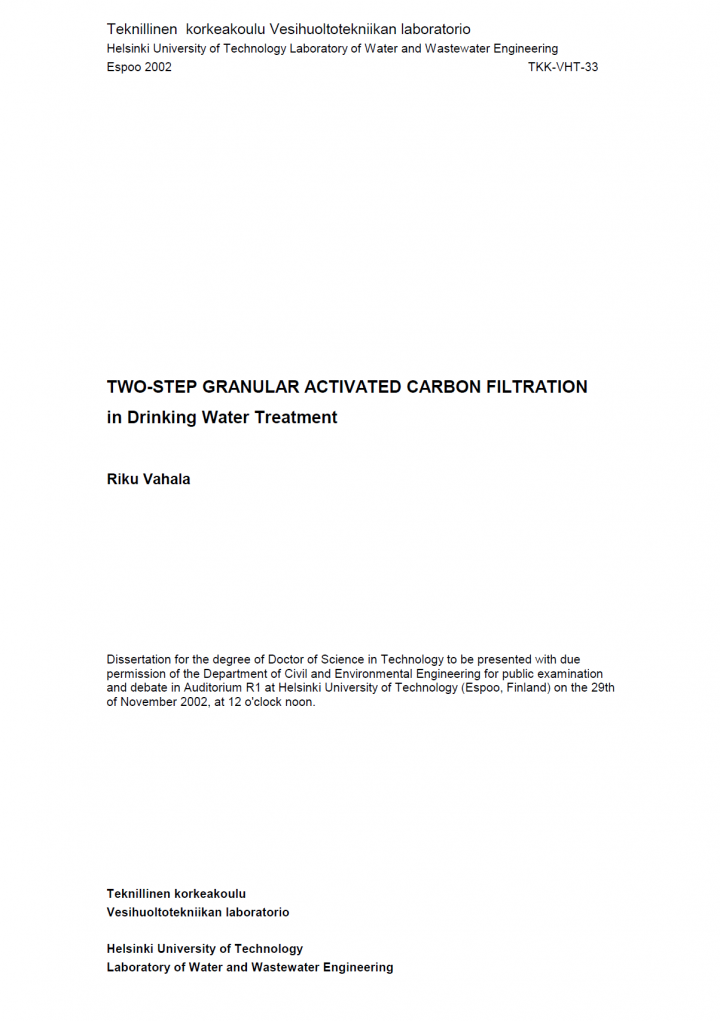
Published in: 2002
Pages: 77
Publisher:
Helsinki University of Technology
Author:
Vahala, R.
Uploaded by:
SuSanA Admin
Partner profile:
common upload
846 Views
19 Downloads
In the treatment of Finnish surface waters, the main objective is to reduce natural organic matter (NOM) before the water is disinfected. In many treatment plants, granular activated carbon (GAC) filtration is applied for the enhanced removal of NOM after conventional treatment. The aim of this study was to assess the performance of two-step GAC filtration in NOM removal from cold humic lake water and to determine its effects on the water quality in the distribution system. Furthermore, the optimal operation conditions of the existing process scheme at Helsinki Water’s treatment plant after installing two-step GAC filtration and UV disinfection was evaluated. The study revealed that the major factors influencing the effective NOM removal in GAC filtration are the choice of GAC type and the frequency of regeneration. Other factors, such as empty bed contact time and biological degradation rate, were of minor importance. However, even the fully exhausted “old” GAC effectively decreased the assimilable organic carbon (AOC) and the regrowth of heterotrophic bacteria in the distribution system. The installation of two GAC filters in series did not result in the more effective use of GAC when a long service time was used. The most interesting finding of the study was that introducing GAC filtration and UV disinfection increased the nitrification in the chloraminated distribution system. The increased growth of nitrifying autotrophs can be explained by the fact that they compete with heterotrophs for biofilm space. In contrast to some other published studies, an excessive release of GAC fines was observed into the treated water during the filter run and filter ripening sequence. The air-scour backwash increased the release of carbon fines as a result of the grinding of GAC. Furthermore, the rapid changes in hydraulic loading were accompanied with the deterioration of GAC effluent water quality. Introducing GAC filtration is a challenge for the more efficient use of the existing treatment process. The preceding conventional treatment may be optimized for the efficient NOM removal, which was shown to increase the GAC service time. The optimal NOM removal was achieved with the use of ferric chloride sulphate instead of aluminium sulphate. GAC filtration also provided additional removal of residual metals resulting from enhanced coagulation. The transformation of NOM into a more biodegradable form was most efficient when a short ozone contact time was provided. The water pH and alkalinity did not affect AOC formation. Although optimal ozonation probably provided the highest biological activity in the following exhausted GAC filters, alone it does not justify the use of ozone. After installing GAC filtration and UV disinfection, the role of ozone is rather to provide an additional barrier against unexpected changes in the source water quality.
Bibliographic information
Vahala, R. (2002). Two-Step Granular Activated Carbon Filtration in Drinking Water Treatment. Helsinki University of Technology
Filter tags
English Europe & Central Asia Water (irrigation, process, other)














